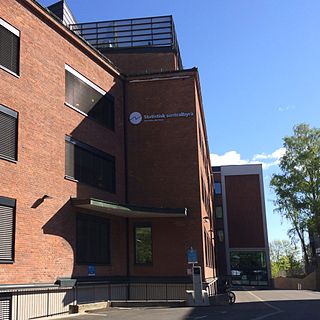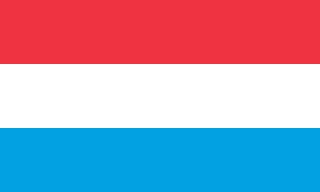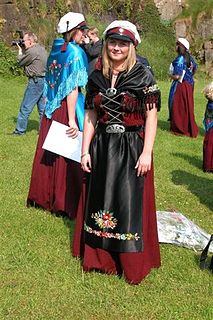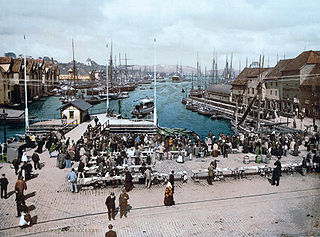Statistics Norway demographic statistics
| Historical population | ||
|---|---|---|
| Year | Pop. | ±% |
| 1769 | 78,274 | — |
| 1801 | 103,402 | +32.1% |
| 1855 | 170,341 | +64.7% |
| 1900 | 219,285 | +28.7% |
| 1950 | 308,128 | +40.5% |
| 2000 | 389,960 | +26.6% |
| 2010? | 422,059 | +8.2% |
| 2020? | 462,432 | +9.6% |
| 2030? | 501,147 | +8.4% |
| Source: Statistics Norway . | ||
The following demographic statistics are from the Statistics Norway, unless otherwise indicated.

Statistics Norway is the Norwegian statistics bureau. It was established in 1876.
Age and sex distribution
Age structure
Norway
(2005 est.)
0–14 years: 19.7% (male 466,243; female 443,075)
15–64 years: 65.6% (male 1,234,384; female 1,486,887)
65 years and over: 14.7% (male 285,389; female 392,331)
Trøndelag
(2009 est.)
0–14 years: 19.1% (male 40,746; female 38,777)
15–64 years: 65.7% (male 141,227; female 130,014)
65 years and over: 15.0% (male 27,436; female 35,004)
Population
- 389,960 (1 January 2000)
- 418,453 (1 July 2009)
- Population growth
- 28,493 (7.3%)
In biology or human geography, population growth is the increase in the number of individuals in a population. Many of the world's countries, including many in Sub-Saharan Africa, the Middle East, South Asia and South East Asia, have seen a sharp rise in population since the end of the Cold War. The fear is that high population numbers are putting further strain on natural resources, food supplies, fuel supplies, employment, housing, etc. in some of the less fortunate countries. For example, the population of Chad has ultimately grown from 6,279,921 in 1993 to 10,329,208 in 2009, further straining its resources. Vietnam, Mexico, Nigeria, Egypt, Ethiopia, and the DRC are witnessing a similar growth in population.
Population - comparative
slightly larger than Malta, but slightly smaller than Luxembourg.

Malta, officially known as the Republic of Malta, is a Southern European island country consisting of an archipelago in the Mediterranean Sea. It lies 80 km (50 mi) south of Italy, 284 km (176 mi) east of Tunisia, and 333 km (207 mi) north of Libya. With a population of about 475,000 over an area of 316 km2 (122 sq mi), Malta is the world's tenth smallest and fifth most densely populated country. Its capital is Valletta, which is the smallest national capital in the European Union by area at 0.8 km.2 The official languages are Maltese and English, with Maltese officially recognised as the national language and the only Semitic language in the European Union.

Luxembourg, officially the Grand Duchy of Luxembourg, is a small landlocked country in western Europe. It is bordered by Belgium to the west and north, Germany to the east, and France to the south. Its capital, Luxembourg City, is one of the three official capitals of the European Union and the seat of the European Court of Justice, the highest judicial authority in the EU. Its culture, people, and languages are highly intertwined with its neighbours, making it essentially a mixture of French and German cultures, as evident by the nation's three official languages: French, German, and the national language, Luxembourgish. The repeated invasions by Germany, especially in World War II, resulted in the country's strong will for mediation between France and Germany and, among other things, led to the foundation of the European Union.
Population growth rate
1.10% (in 2008)
Population growth rate - comparative
slightly larger than Argentina, but slightly smaller than Ireland.

Argentina, officially the Argentine Republic, is a country located mostly in the southern half of South America. Sharing the bulk of the Southern Cone with Chile to the west, the country is also bordered by Bolivia and Paraguay to the north, Brazil to the northeast, Uruguay and the South Atlantic Ocean to the east, and the Drake Passage to the south. With a mainland area of 2,780,400 km2 (1,073,500 sq mi), Argentina is the eighth-largest country in the world, the fourth largest in the Americas, and the largest Spanish-speaking nation. The sovereign state is subdivided into twenty-three provinces and one autonomous city, Buenos Aires, which is the federal capital of the nation as decided by Congress. The provinces and the capital have their own constitutions, but exist under a federal system. Argentina claims sovereignty over part of Antarctica, the Falkland Islands, and South Georgia and the South Sandwich Islands.

Ireland is an island in the North Atlantic. It is separated from Great Britain to its east by the North Channel, the Irish Sea, and St George's Channel. Ireland is the second-largest island of the British Isles, the third-largest in Europe, and the twentieth-largest on Earth.
Total fertility rate
1.90 children born/woman (2007)
Language
Literacy
definition: age 15 and over can read and write
total population: 100%
male: NA%
female: NA%








